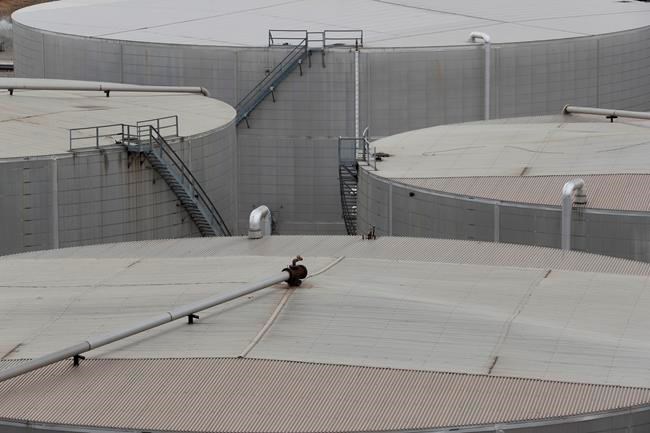CALGARY — Investment in oil and gas production in Canada will jump by 11 per cent to hit $40 billion in 2023, the country's largest fossil fuel industry group said Wednesday.
The Canadian Association of Petroleum Producers said spending in the oilpatch in 2023 is expected to surpass pre-pandemic levels, three years after the arrival of COVID-19 decimated global commodity prices.
“It feels pretty good. It’s a significant milestone for sure," said CAPP president and CEO Lisa Baiton.Â
"It’s a pretty strong signal that the Canadian upstream oil and gas industry has started the year in a position of strength.”
Upstream oil and natural gas investment in Canada reached a low of $22 billion in 2020, as COVID-19 restrictions led to a collapse in global demand for gasoline, jet fuel and other energy products.
But the re-opening of global economies over the last year has resulted in a dramatic resurgence of demand. That, combined with Russia's invasion of Ukraine, saw oil and gas prices spike to record highs in 2022 — and many Canadian companies reaped record profits as a result.
CAPP said this country's conventional oil and natural gas capital investment for 2023 is forecast at $28.5 billion, while oilsands investment is expected to reach $11.5 billion.
In addition to a healthy commodity price environment, oil producers are looking forward to the completion of the Trans Mountain pipeline expansion, which is expected to offer an additional 590,000 barrels per day of export capacity when it comes online later this year.
And Baiton said the natural gas industry is also ramping up drilling up plans in advance of the completion of Phase One of LNG Canada's liquefied natural gas export terminal currently under construction near Kitimat, B.C.
The $40 billion in anticipated industry spending this year is still only half the level of capital investment the Canadian oil and gas sector saw in 2014, the last time commodity prices boomed. During that period, the oilsands were booming and a number of major construction and expansion projects were under way.
By contrast, in 2023, much of the industry's spending will go towards maintenance and "incremental growth" projects, Baiton said, as well as to help manage the inflationary pressures being felt by companies.
"This industry has put tens of billions of dollars in capital investment into Canada, and has tens of billions more that they’d like to deploy," she said.Â
"But a lot of that is dependent on regulatory certainty and Canadian competitiveness vis-à -vis other jurisdictions around the world.”
For example, Baiton said, there are approximately 25 carbon capture projects being proposed by companies in Alberta right now, including a major carbon capture and transportation network that has been pitched by Canada's largest oilsands companies.
While many environmentalists say the fossil fuel industry should be moving faster to break ground on these projects, given their hefty profits in the past 12 months, Baiton said the industry is still in talks with provincial and federal governments to come up with a coordinated approach that would help get the technology off the ground.
In particular, she said the industry is looking for similar incentives for Canadian CCUS such as those contained in the Inflation Reduction Act south of the border.
"I think Canada could do more to incent that global capital investment to come here to Canada for various significant long-dated assets, and also to simplify and shorten some of the regulatory barriers to make those projects come to fruition," she said.
The International Energy Agency, which projects Canada will hit an all-time record for oil production this year, has said global oil demand is set to rise by 1.9 million barrels per day in 2023, to a record 101.7 mb/d. Nearly half of that gain will come from China following the lifting of its Covid restrictions, the IEA says.
The IEA also predicts that global oil demand will rise each year until 2030, but peak soon after as electric vehicles and efficiency gains undermine demand.
This report by The Canadian Press was first published March 1, 2023.
Amanda Stephenson, The Canadian Press




